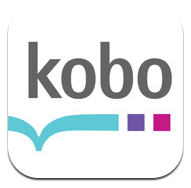August couldn’t last forever (too bad) and neither could our vacation from the Inside PR podcast. So, as September ushers in cooler weather, Martin Waxman, Gini Dietrich and I are back in front of our microphones to record this week’s Inside PR.

Be a mensch
We start off with a discussion of corporate social responsibility – an issue Liza Butcher raised in a comment last week. Gini talks about the preference people have to work with a company that gives back. I cite Guy Kawasaki’s suggestion in his new book, Enchantment, that you “should be a mensch.” Among other things, this means that you should “help someone who can be of absolutely no use to you.” Martin underlines this point with an example of a company that risked appearing self serving and self congratulatory in acting upon their social responsibility.
We the People
We also talk about the We the People site that is being launched by the White House. I compare it to the British Prime Minister’s Number10 Website, which also has a petition function as well as links to policy consultations. I’m skeptical of the value of pure crowdsourcing for policy development. I believe that it can lead to unfocused conversations. The best results are achieve, I think, when the policy makers are prepared to guide the conversation, being up front and honest about parameters, practical limits and secondary objectives. In other words, I think that the best public policy emerges when policy makers channel pure crowd sourcing into “purposeful discussion” through their active and open participation in the conversation.
Gini argues that the site falls short of its potential by making the culmination of the process a response from policy makers in the White House. Martin wonders about the requirement for 5,000 expressions of support as the threshold at which petitions will receive a reply. Is it an arbitrary number? Or is there some rationale for this?
Darwin for measurement
Finally, we talk about the recent news that monitoring service VMS shut its doors recently. Katie Paine published a thoughtful post on why the service failed. One of her arguments that rang true to me is that some longstanding suppliers are focused on giving their customers what they feel comfortable with. Newer entrants like Radian6 and Sysomos are innovating to provide the marketplace with new insights. Services that don’t match them will fall by the wayside.
So, that’s our first post-summer IPR. Please give it a listen and let us know what you think.







